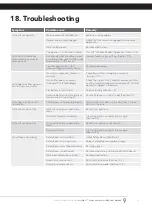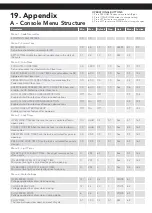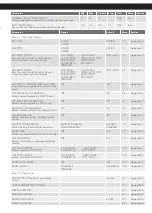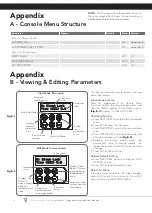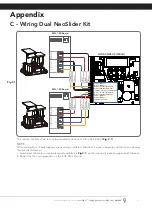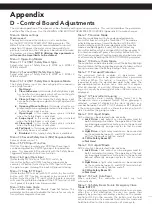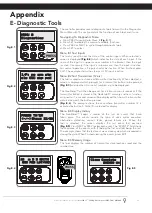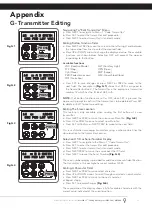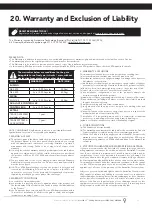
26
Owner Installation Instructions
NeoSlider
TM
- Sliding Gate Opener NES-500 / NES-800
Transmitter Listing Facility
The NeoSlider™ provides a transmitter listing facility which enables the
user to find a transmitter location within the memory. Once located, a
stored transmitter can be replaced, deleted, edited, copied or, if the
location is empty, a new transmitter can be coded.
Fig H.1
Fig H.2
Fig H.3
Fig H.4
Menu Option
Operation
Code Operation (location
empty)
If the code operation is selected on an empty transmitter location, the BASIC CODE
TRANSMITTER PROCEDURE will be initiated with the transmitter being saved in
the selected location. This is useful when managing transmitters using a scheme
which ties the store location to the transmitter’s owner.
Code Operation (location
used)
If the code operation is selected for a location that already contains a transmitter,
then the BASIC CODE TRANSMITTER PROCEDURE will be initiated and the new
transmitter will replace the existing one. Note that the button functions and name
of the existing transmitter will be transferred to the new transmitter. This procedure
is of great convenience when replacing a lost transmitter.
Delete Operation
The delete operation is used to remove a transmitter from memory along with the
name and button function settings.
Edit Operation
The edit operation displays the transmitter record for editing purposes. See
TRANSMITTER EDIT PROCEDURE (Appendix F) for details.
Copy Operation
The copy operation is used to code multiple transmitters with the same button function
as that of the selected transmitter. Once selected an abbreviated code set routine is
initiated which repeats steps 2 & 3 of the BASIC CODE TRANSMITTER PROCEDURE for
each transmitter to be coded. Coding is terminated by pressing the EXIT button.
Exiting The List
To exit the transmitter list, simply press EXIT to return to the Code menu.
H- Transmitter Managment
Appendix
14
ID
B B SMITH
OSC PED LGT VAC
PRESS
PRESS
Press Tx’er
Button LIST>
PRESS
Press Tx’er
Button LIST>
PRESS
NOTE:
When a transmitter is remotely coded, its ID label is set to that
of the existing transmitter. If the existing transmitter does not have an ID
label assigned, then the ID label of the new transmitter is set to: R/C Tx
###, where ### is the existing transmitters store number. This ensures that
the originator of any remotely coded transmitter can be identified.
Method 1 - Go To The Start Of The List
Accessing The List Menu
a. Press NEXT to navigate to Menu 1
(Fig. H.1
)
.
b. Press SET to enter the transmitter edit procedure.
c. Press NEXT to enter the transmitter list and edit mode.
Method 2 - Use The Transmitter To Go Direct To The List
Accessing The List Menu
a. Press NEXT to navigate to Menu 1
(Fig. H.1
)
.
b. Press SET to enter the transmitter edit procedure.
c. Press the transmitter once
(Fig. H.2)
.
d. Press NEXT to view the transmitter parameters. This method is
used for quick navigation if the transmitter is available.
NOTE
: “VIEW” will not be shown if the transmitter is not stored. Once
the list is displayed, it can be sorted by stored number, ID Label or Serial
Number. Use the NEXT or PREV buttons to select the sorting method.
NOTE:
When sorting by ID label or S/N, only stored transmitters locations
are displayed.
Navigating The List
a. Press the UP or DOWN arrows to navigate through the list
(Fig. H.3)
.
NOTE:
Holding a button down will step through the list faster.
b. Press SET to display the menu of available functions.
Selecting An Operation
a. Press NEXT or PREV to cycle through the four menu options
(Fig H.4)
b. Press EXIT to return to the list.
c. Press SET to execute the menu’s operation.






